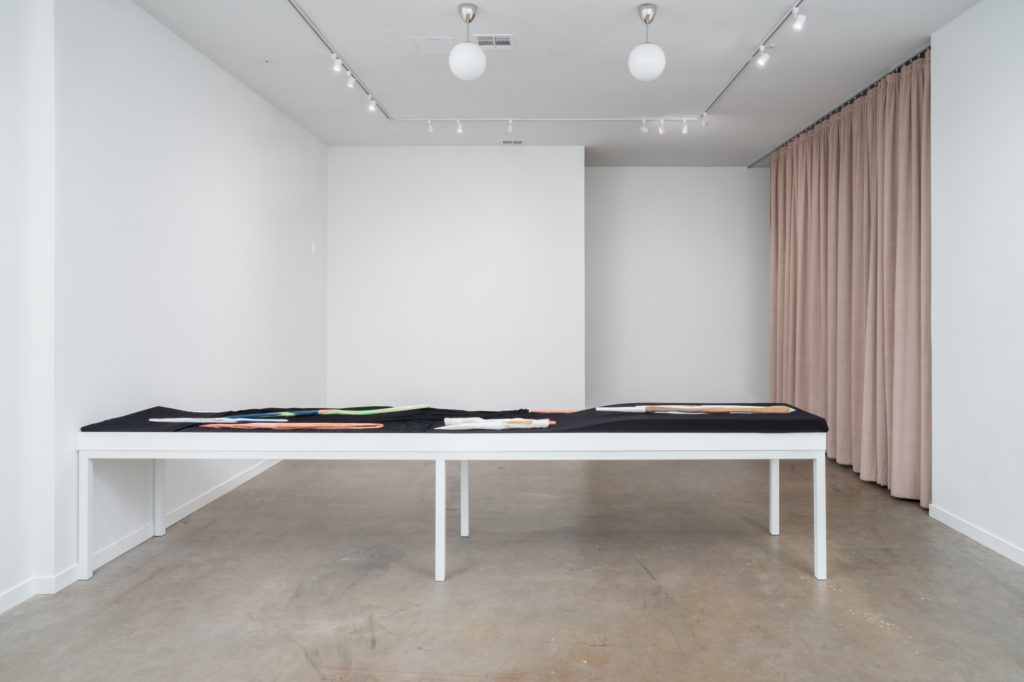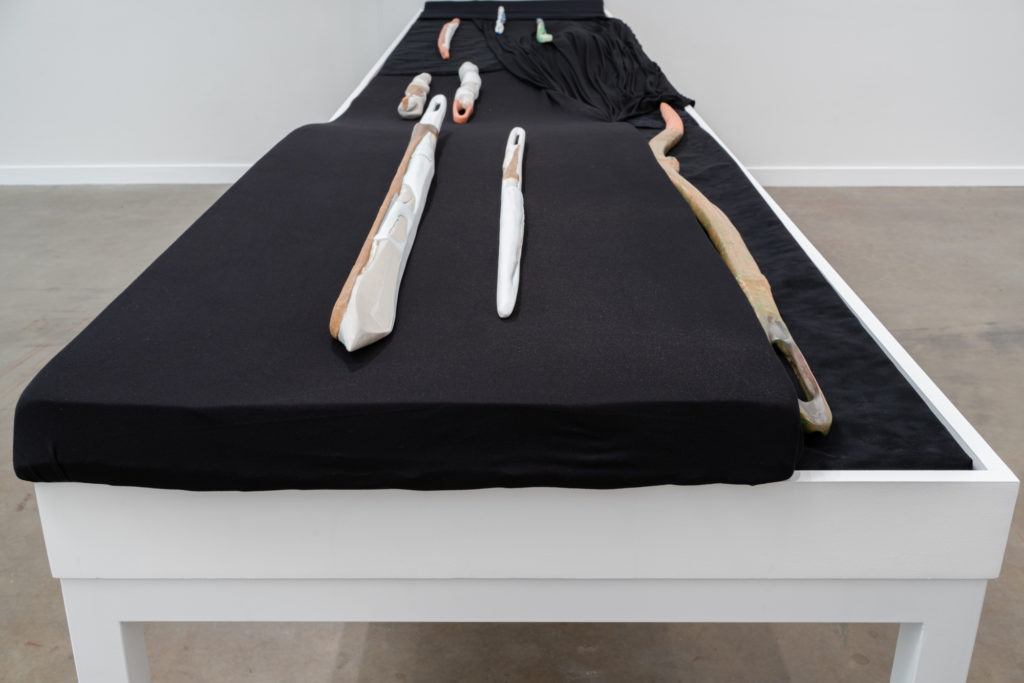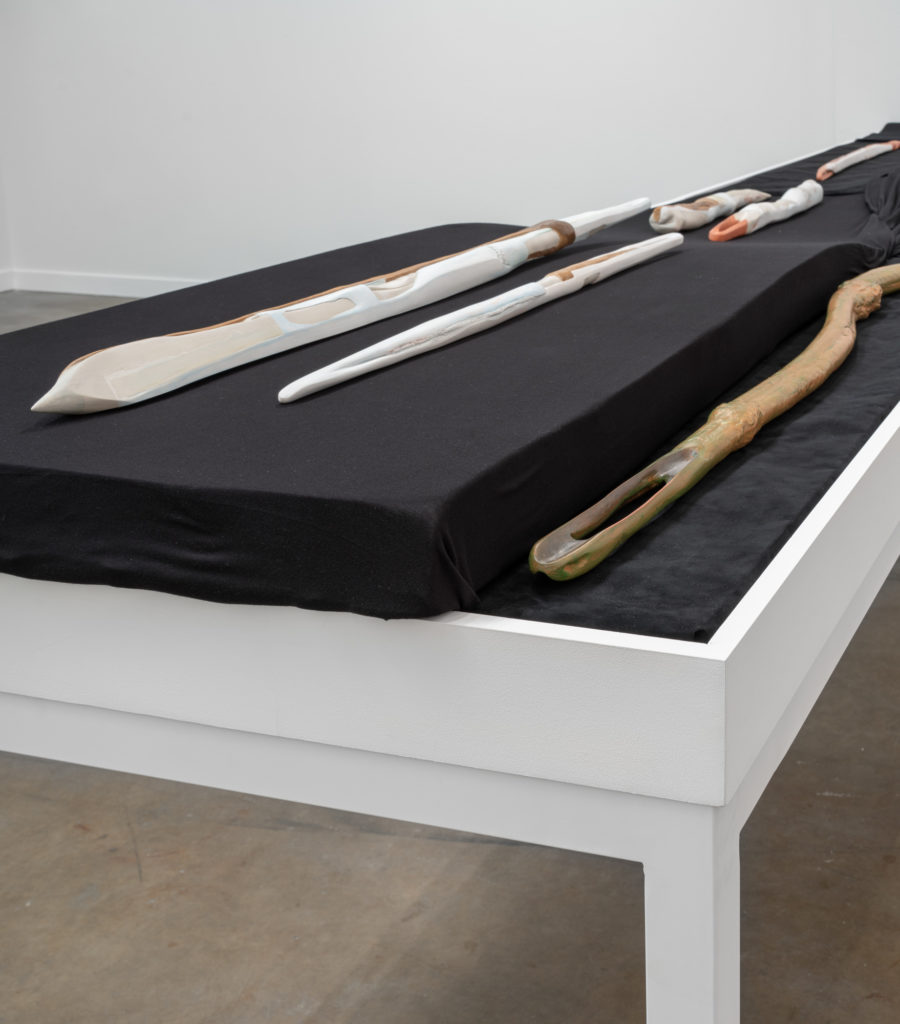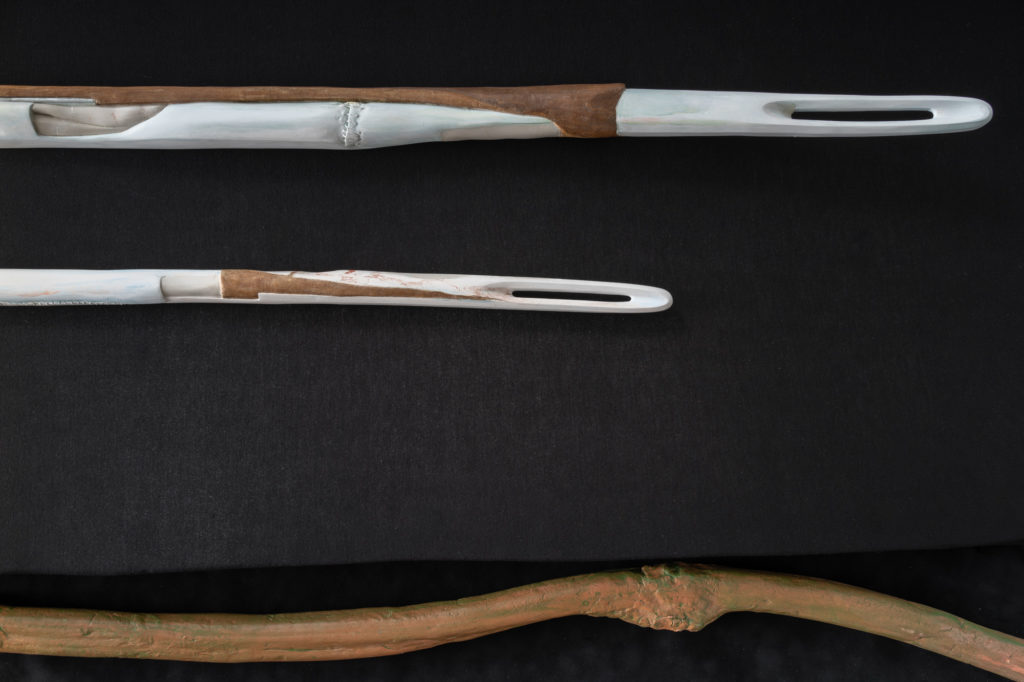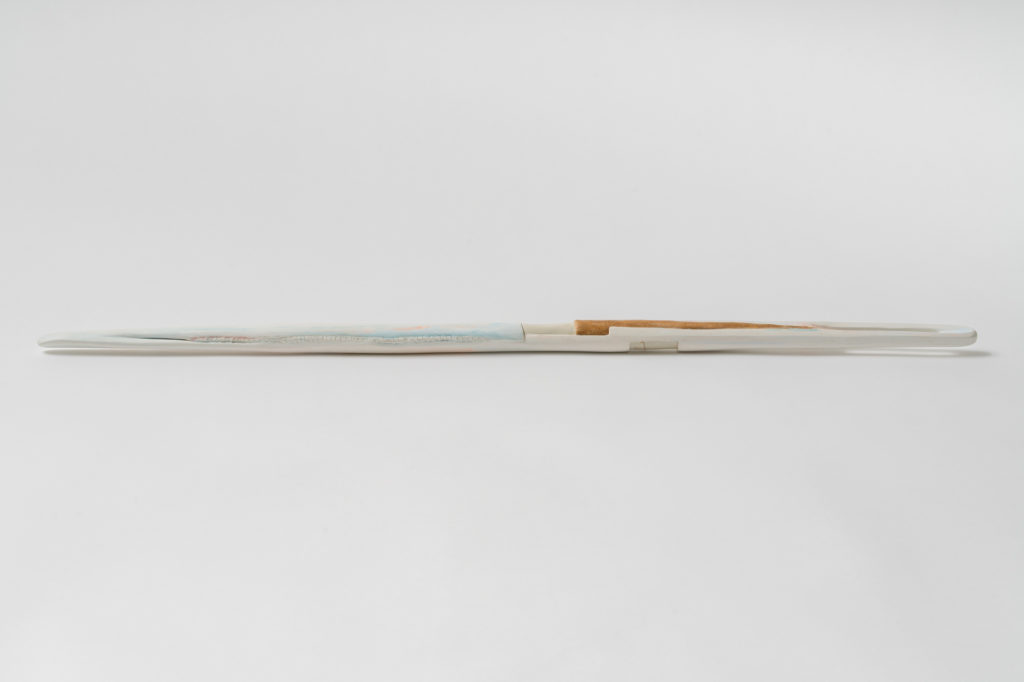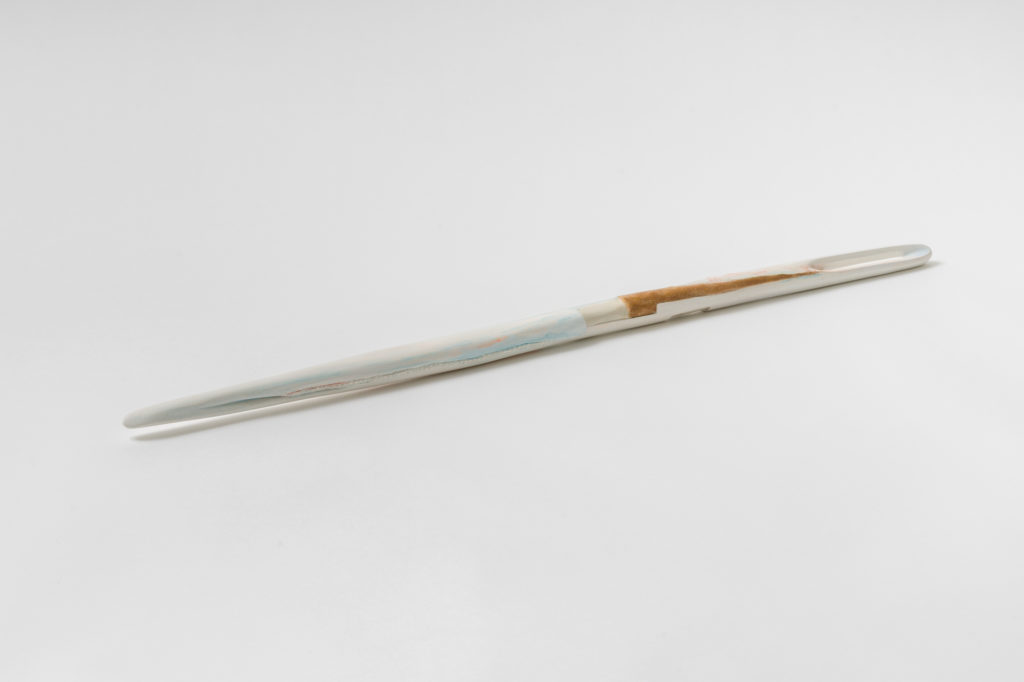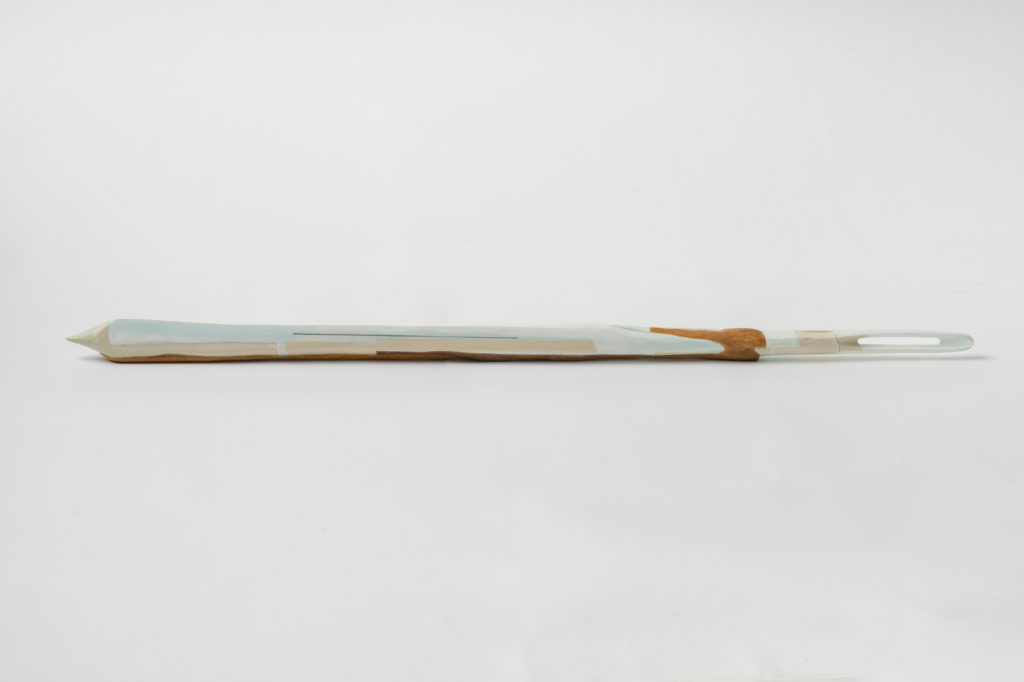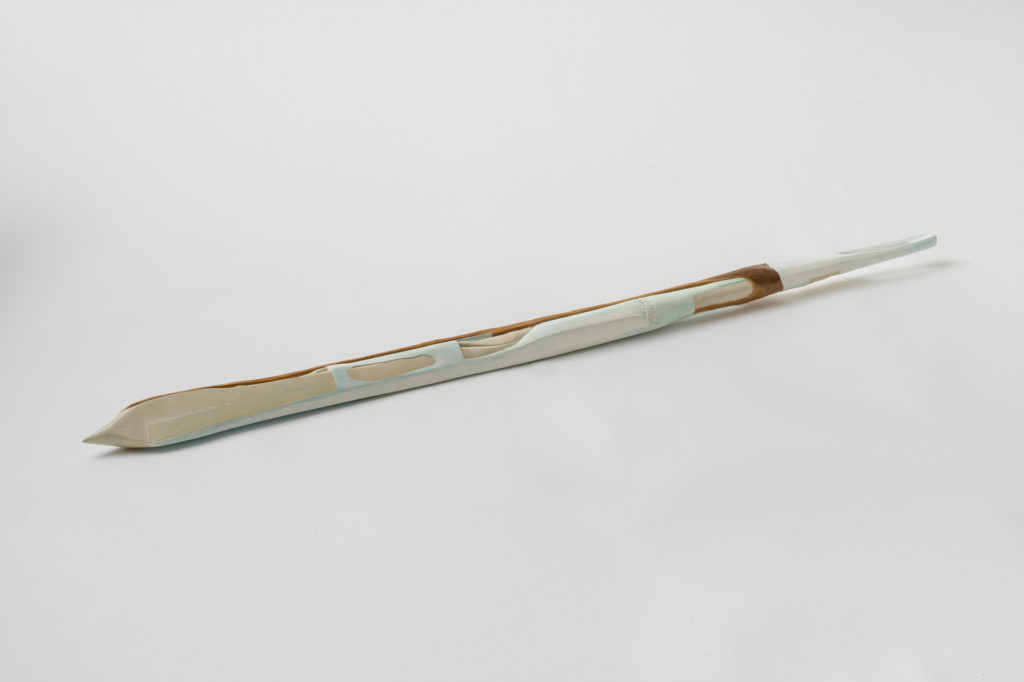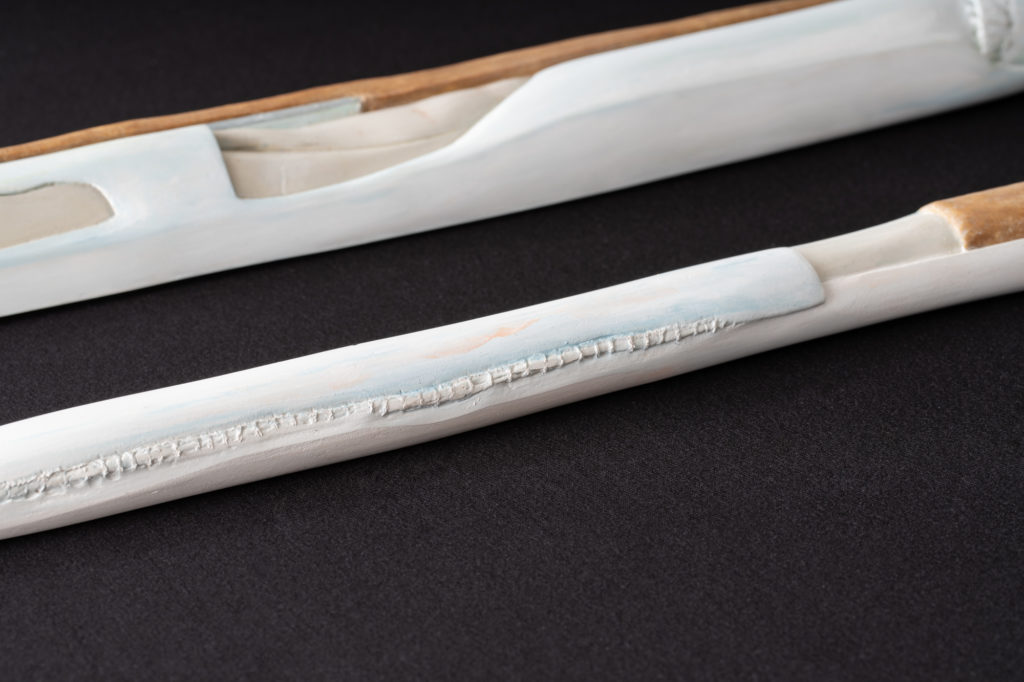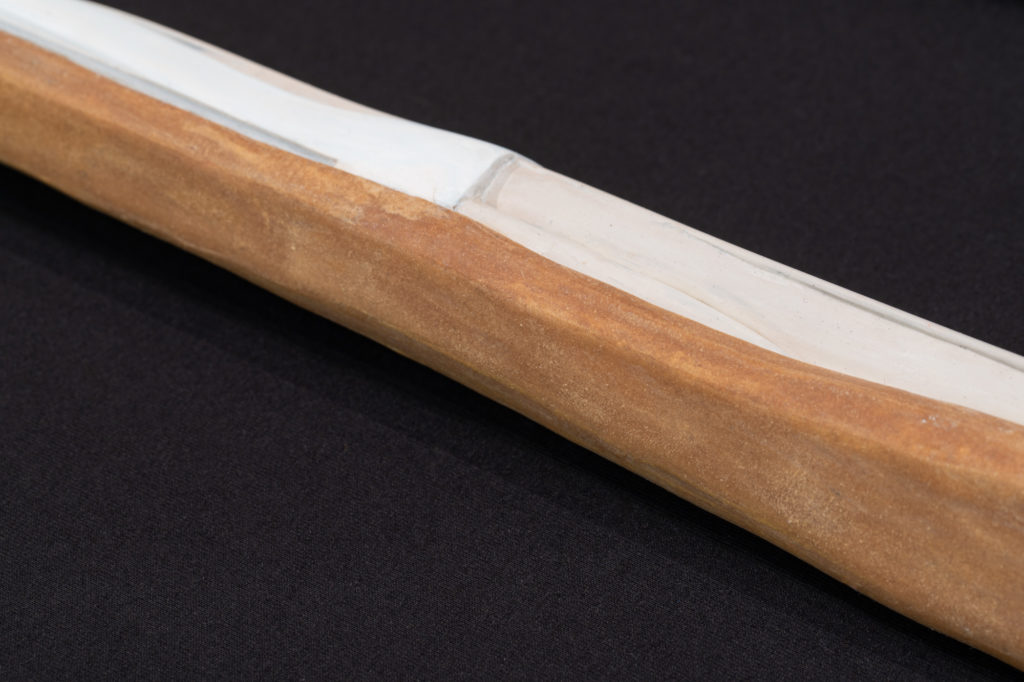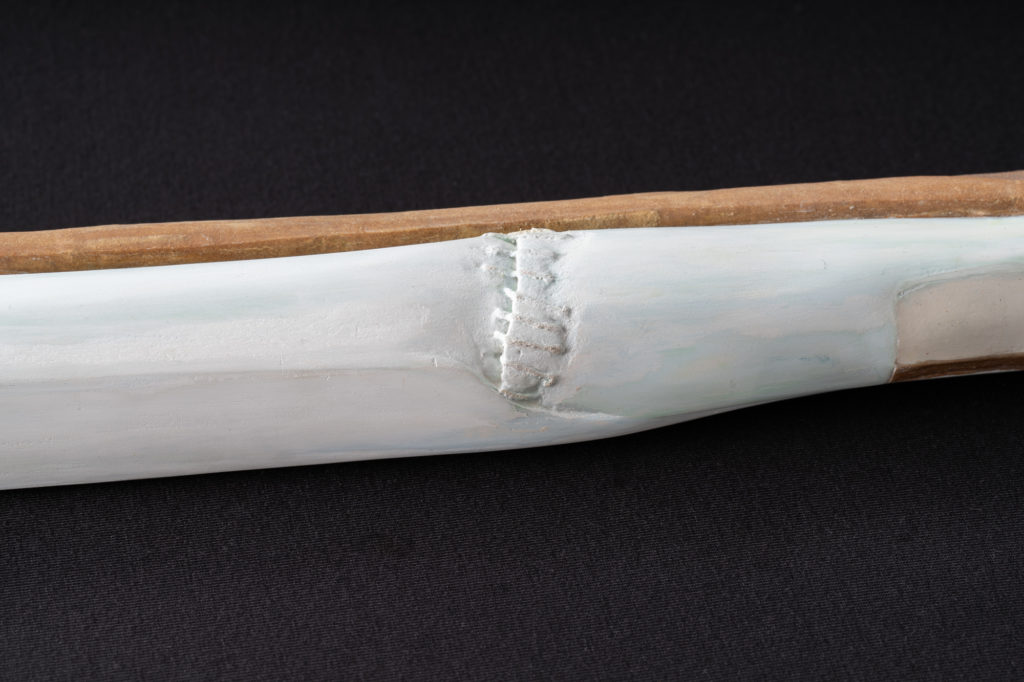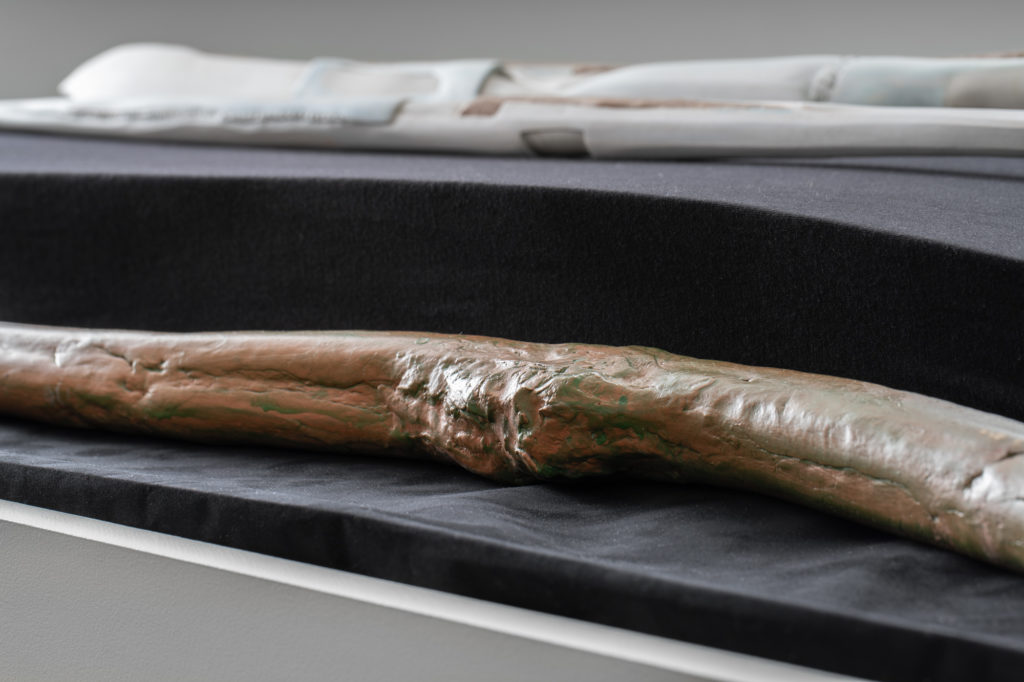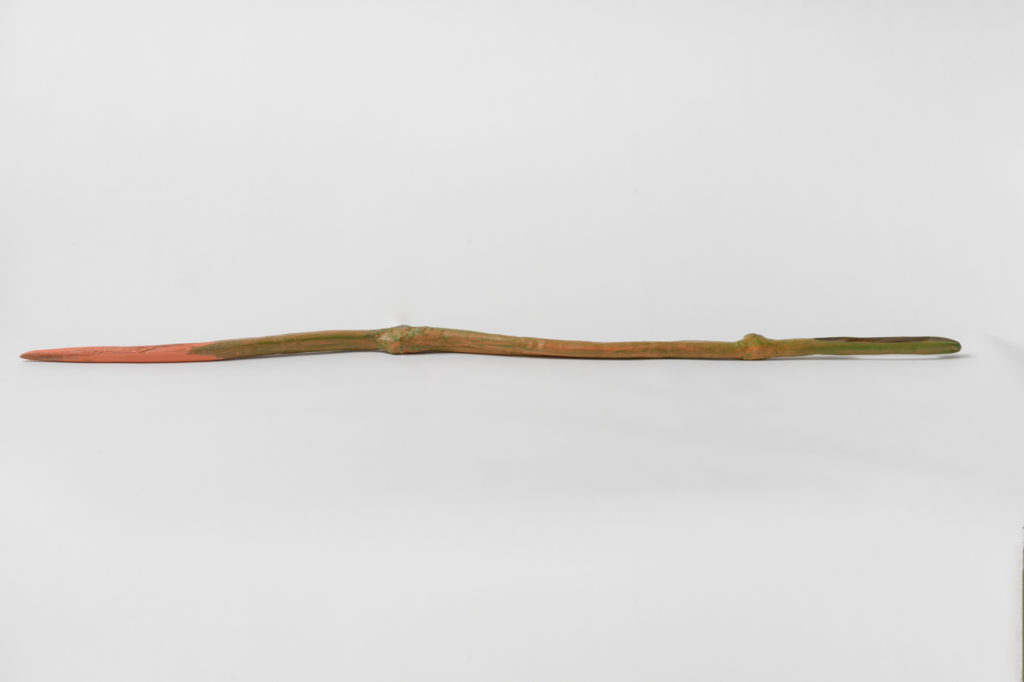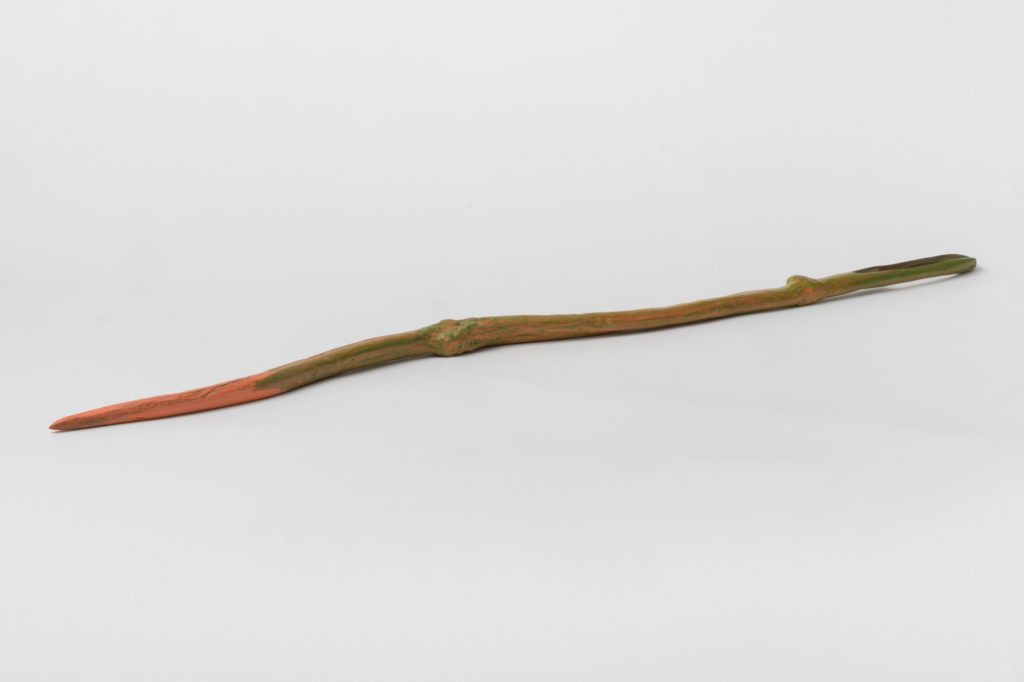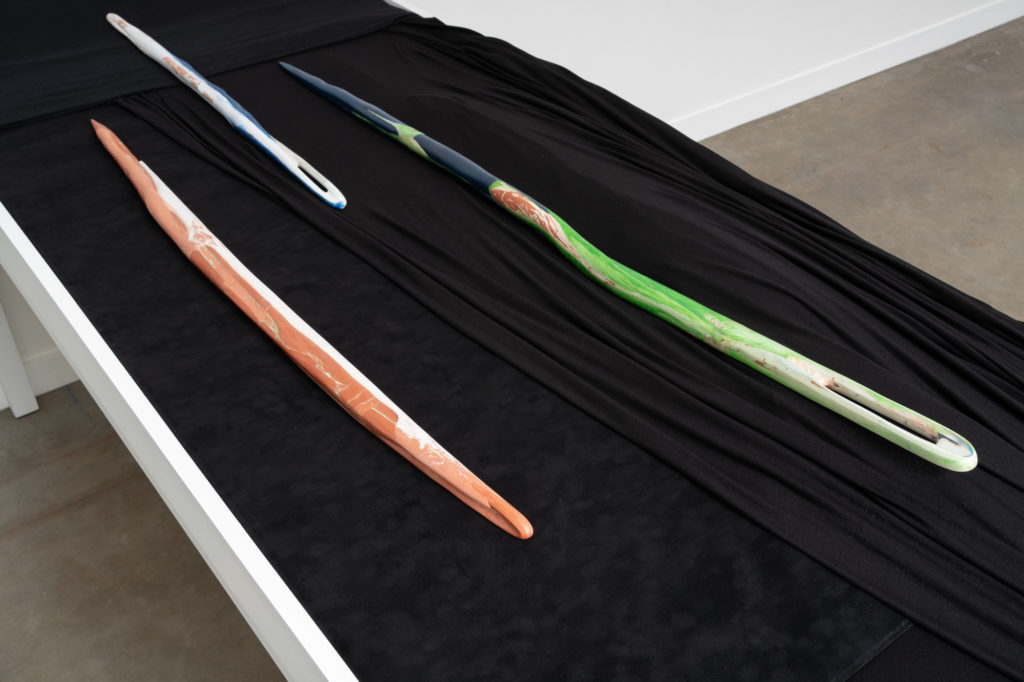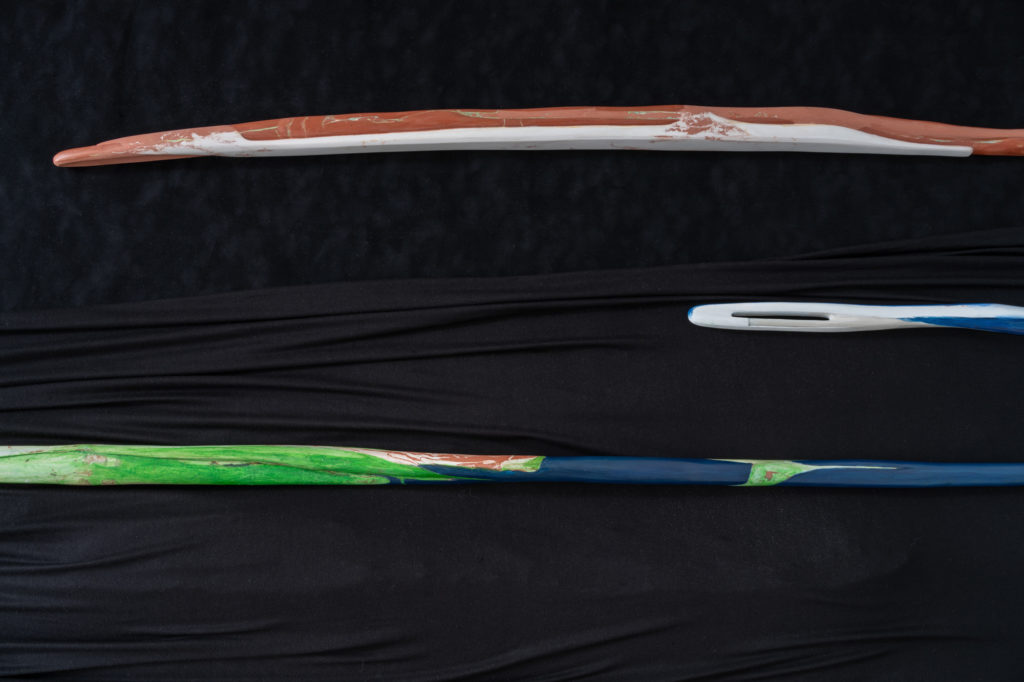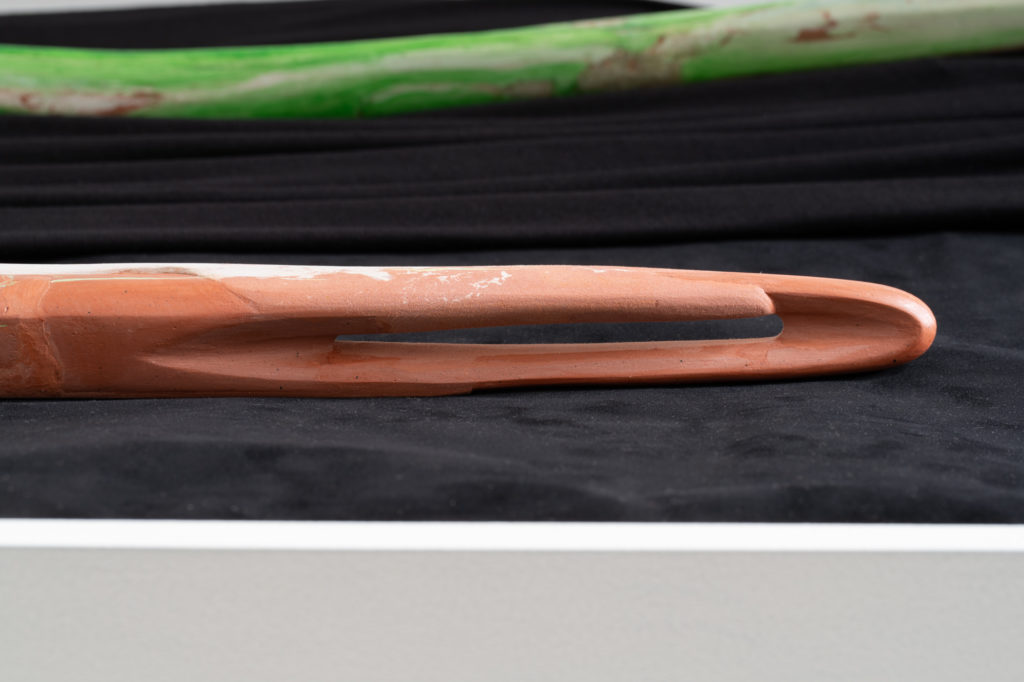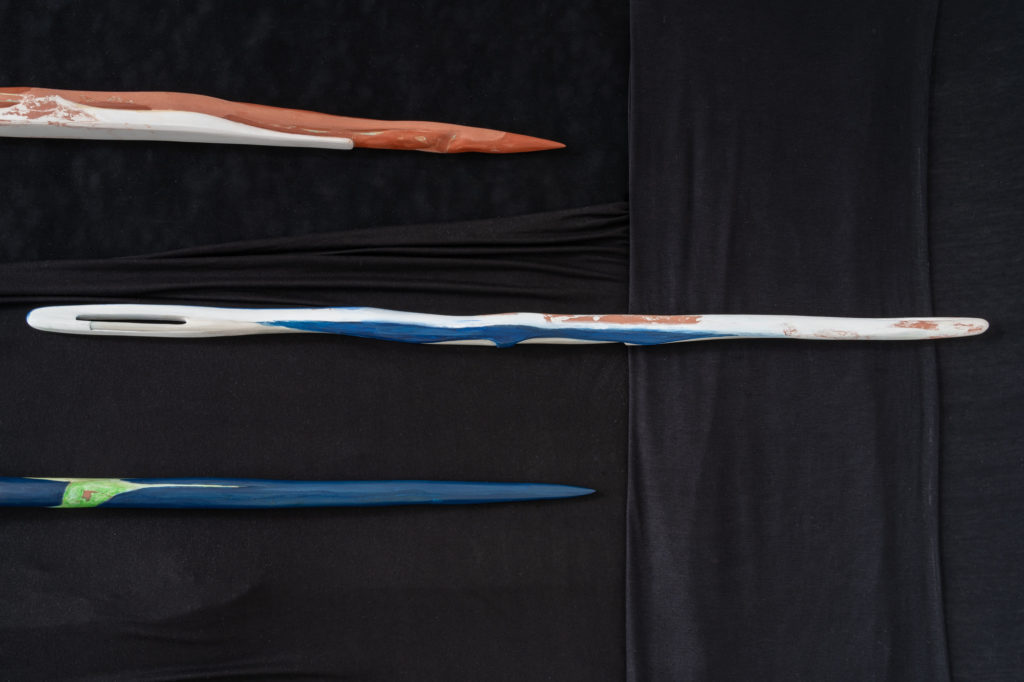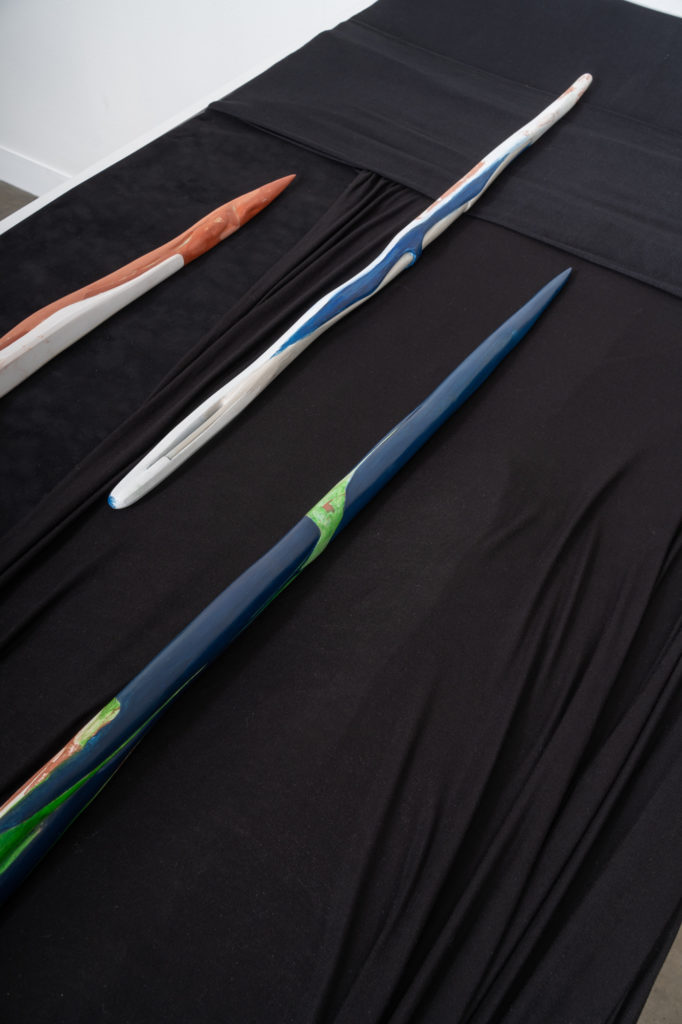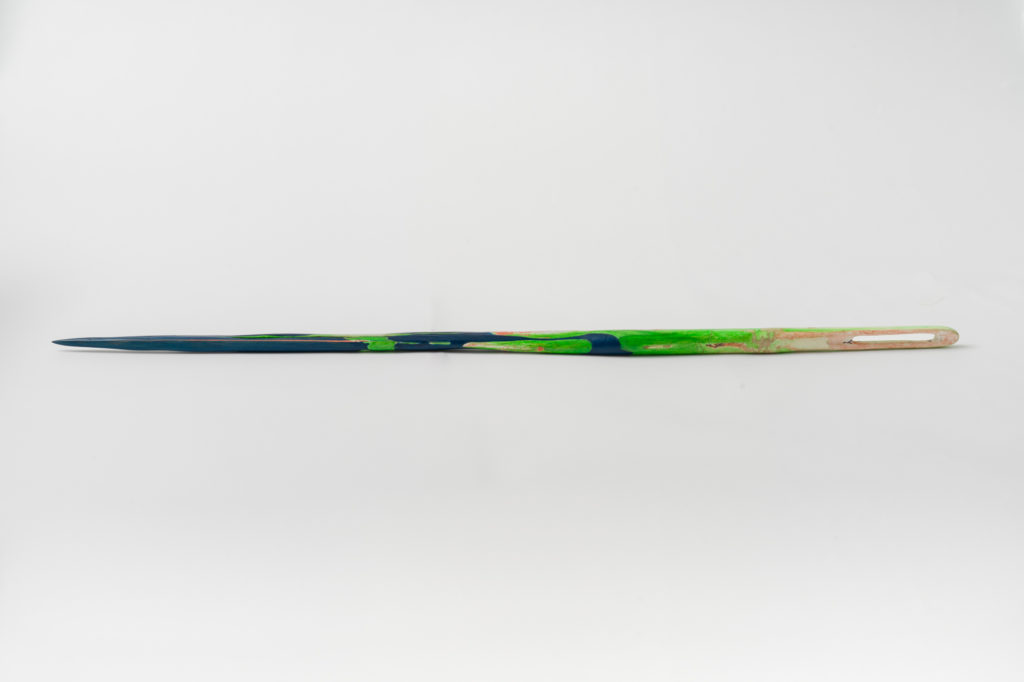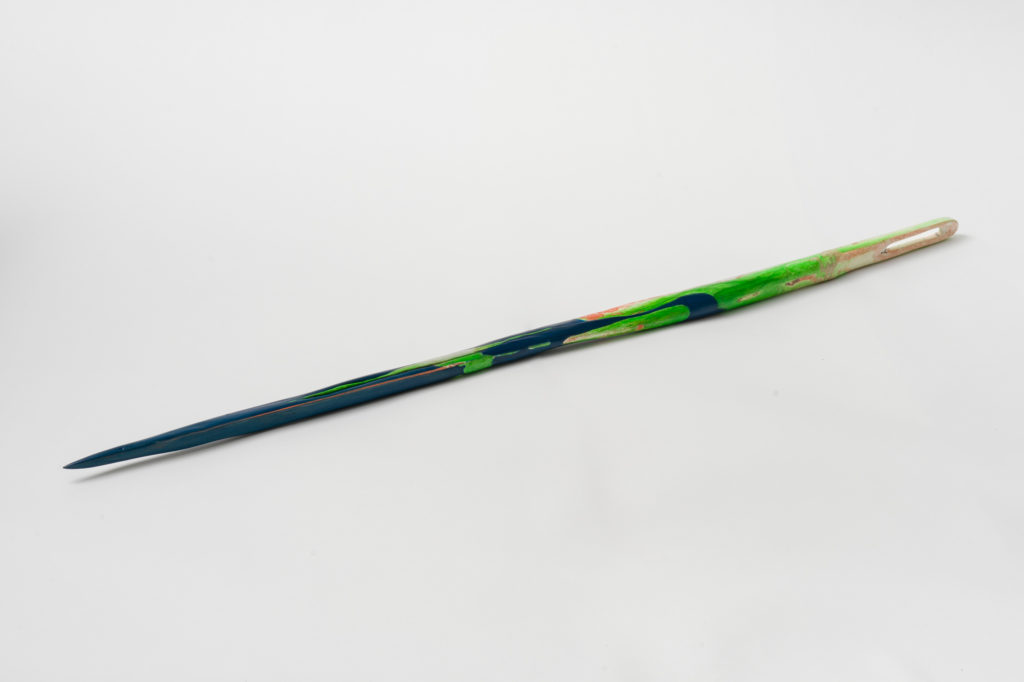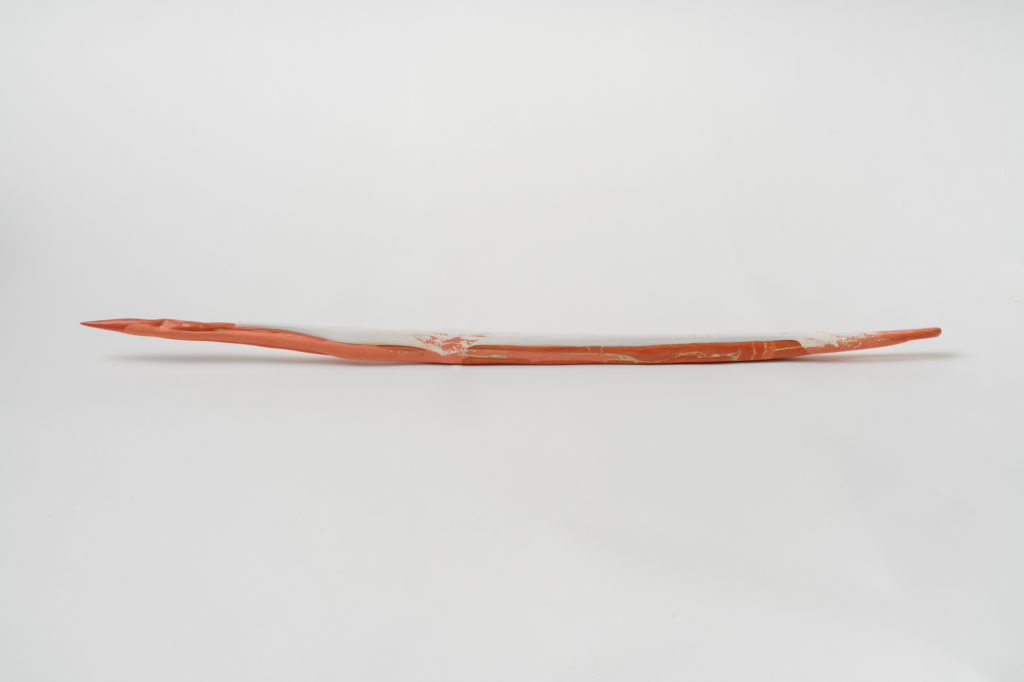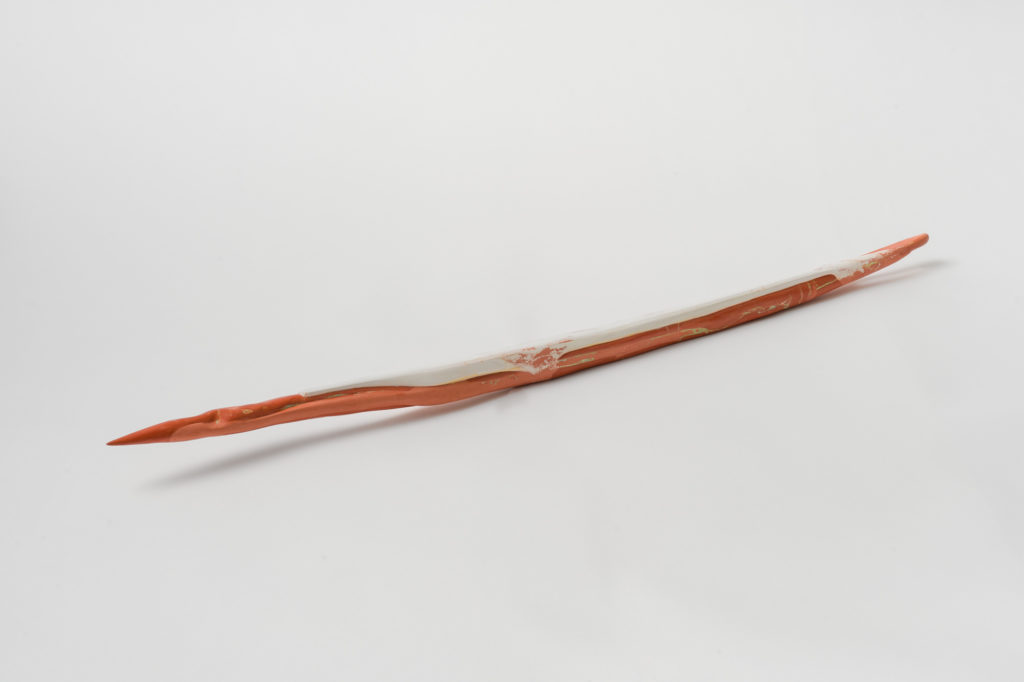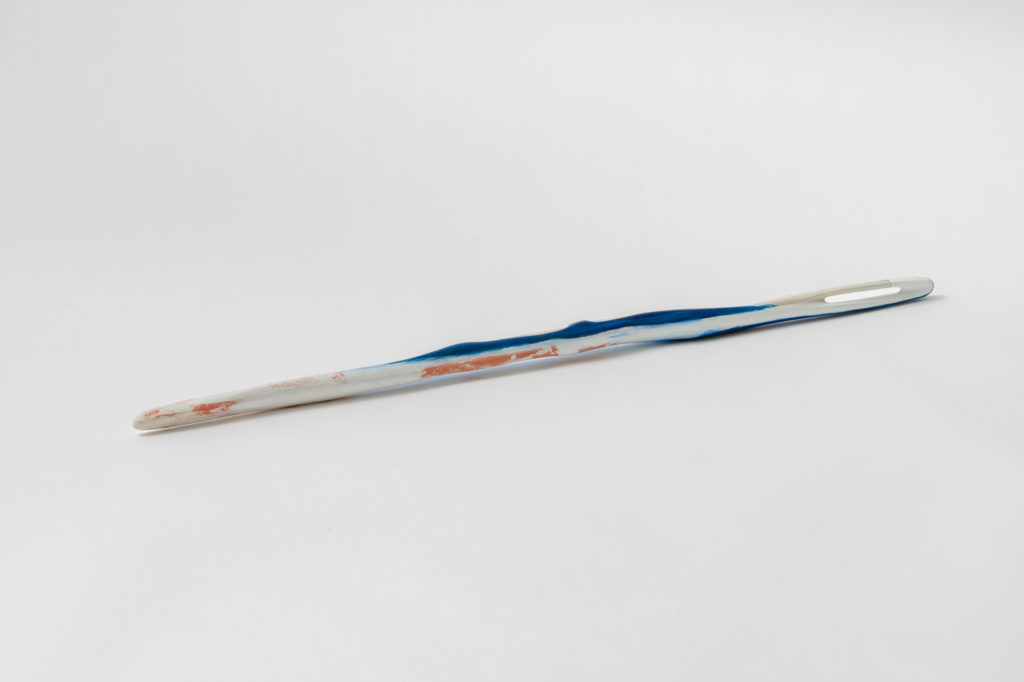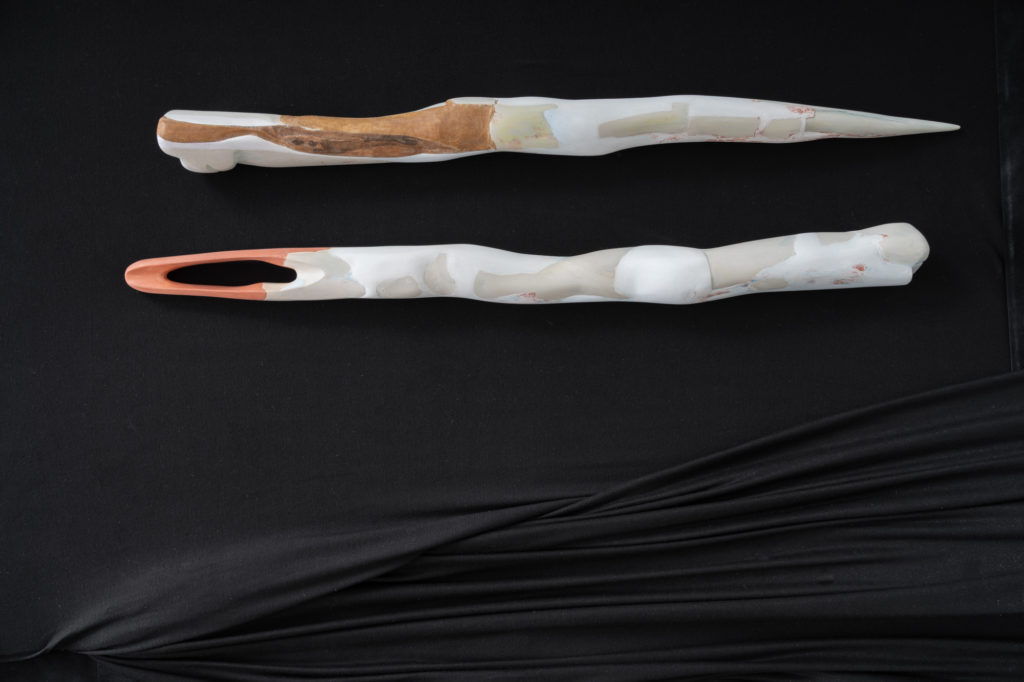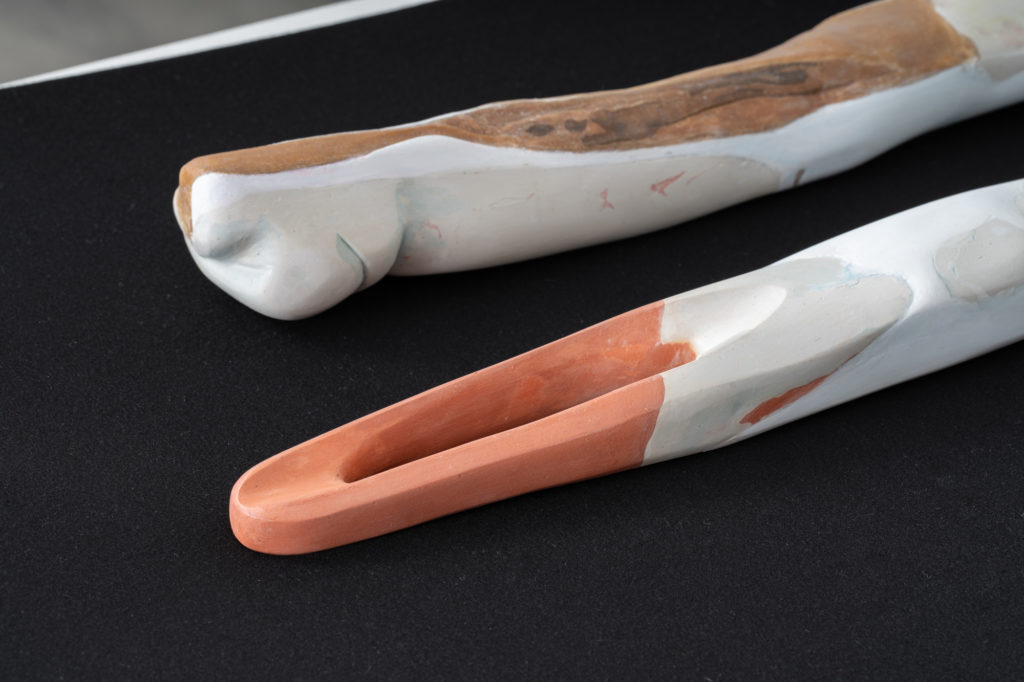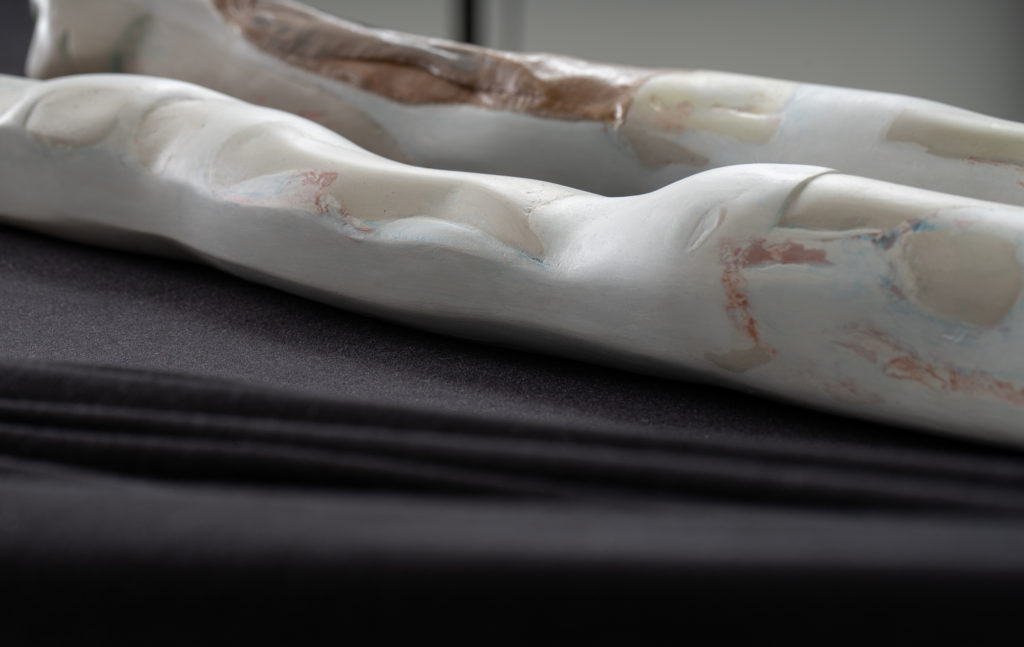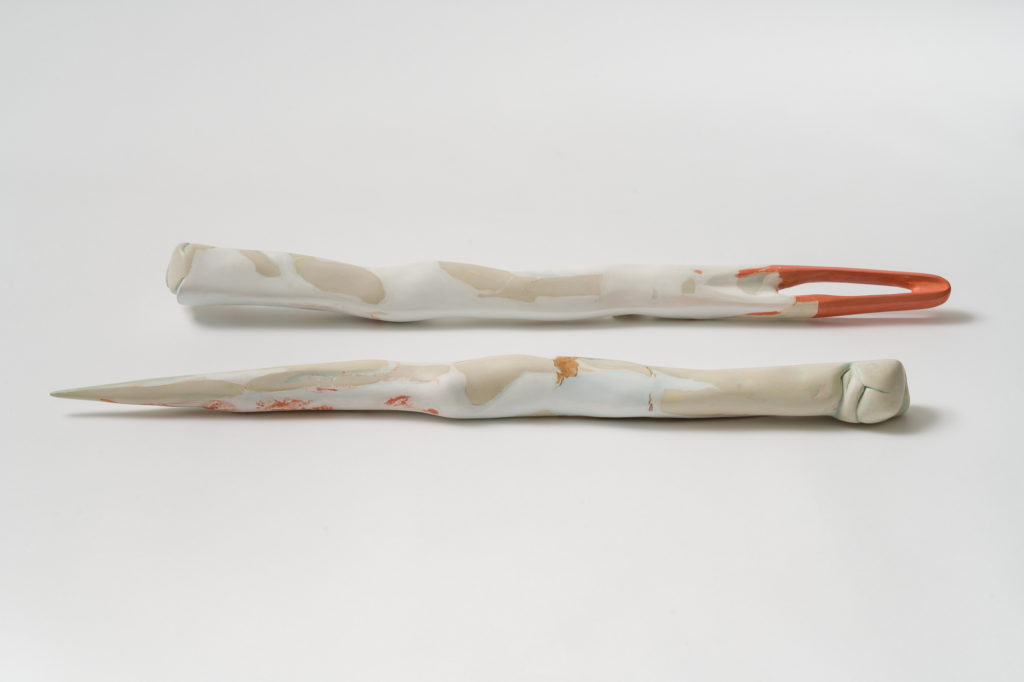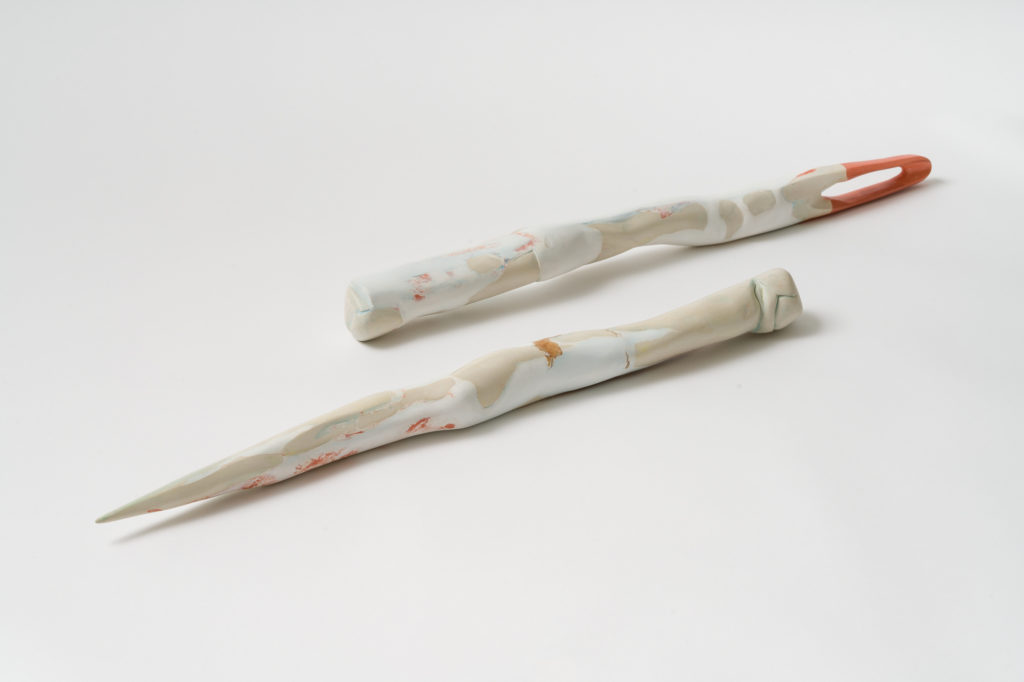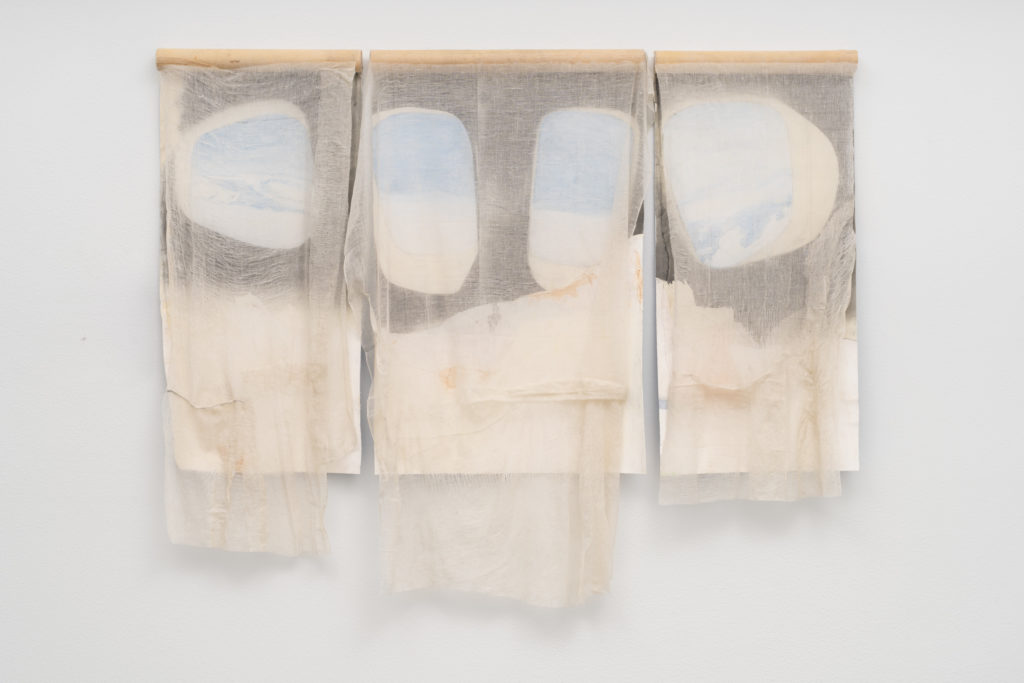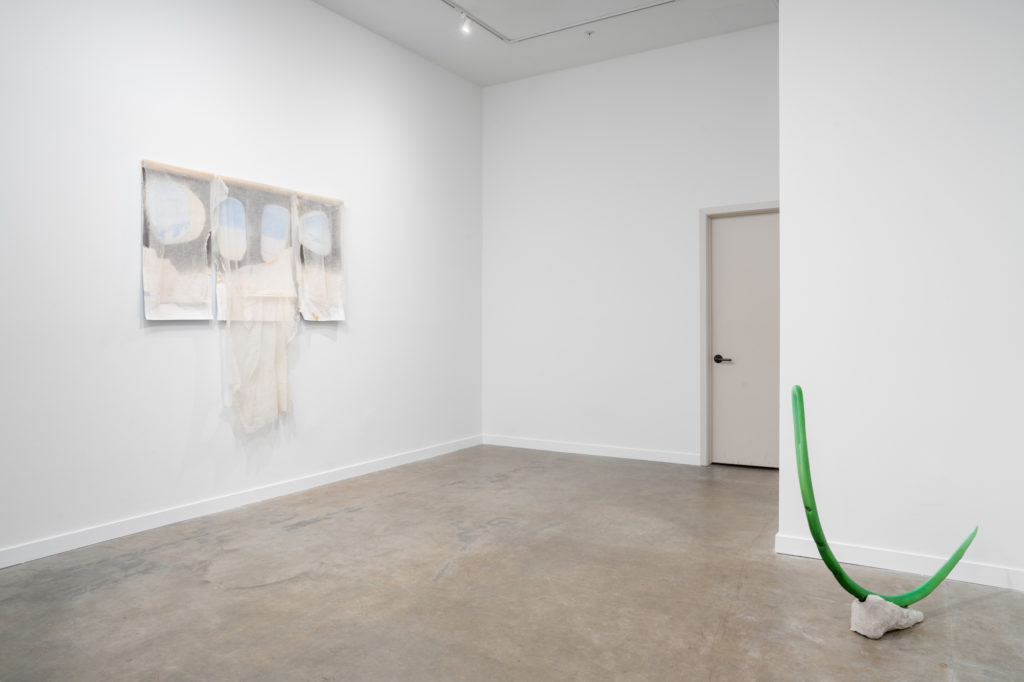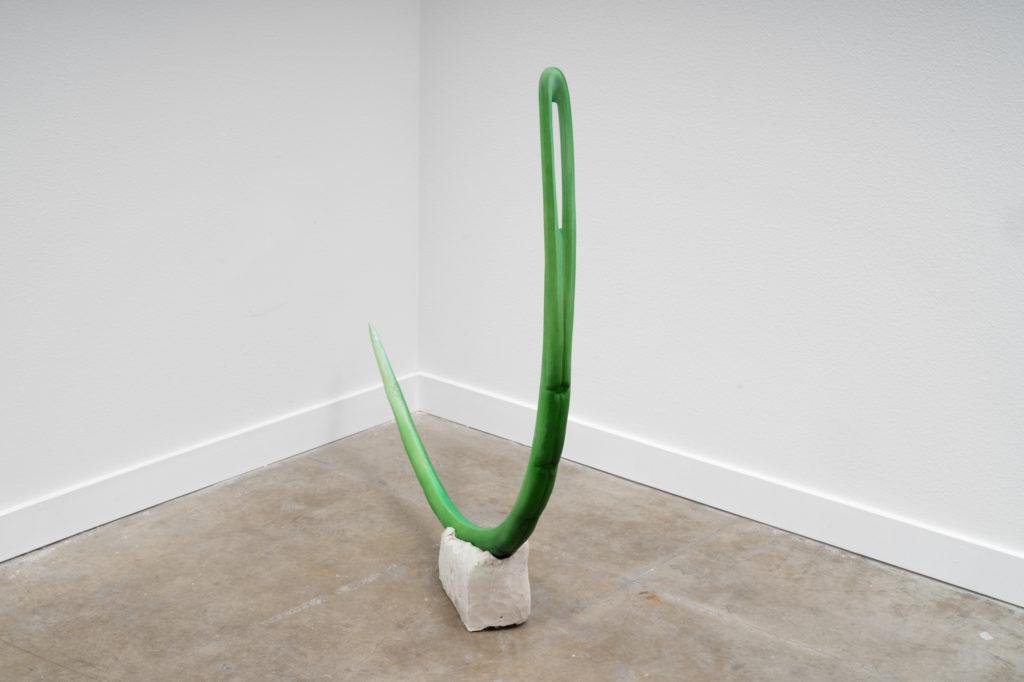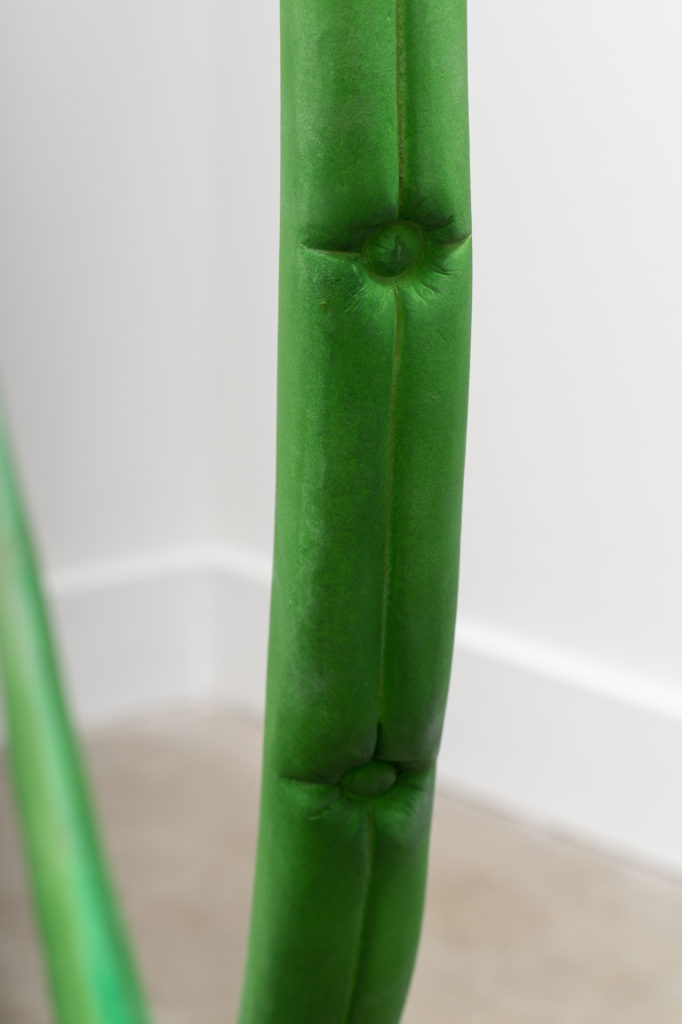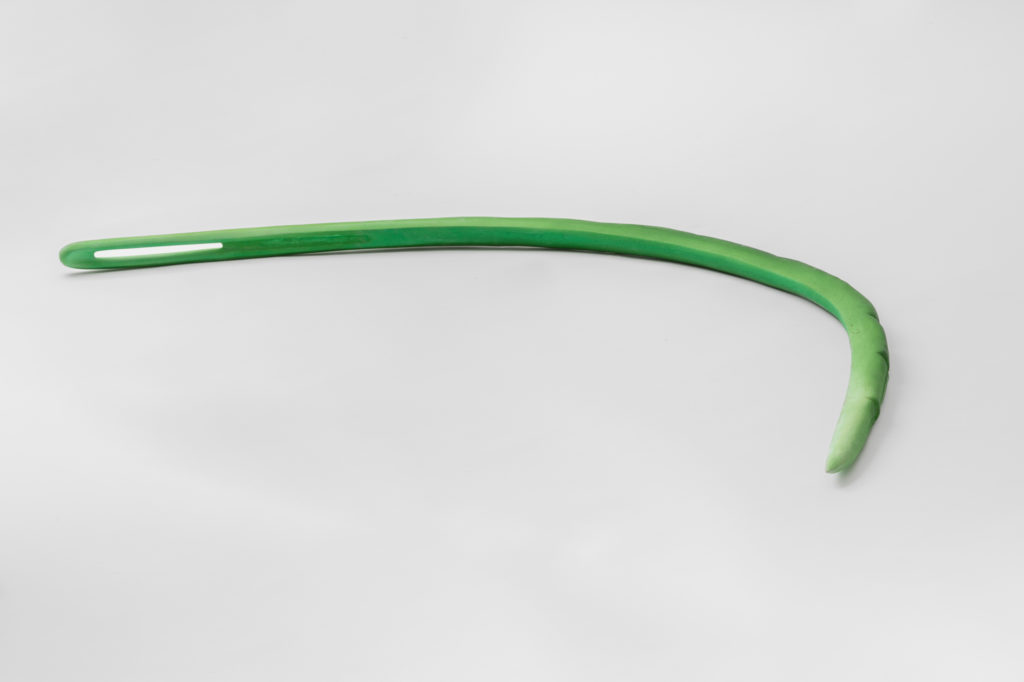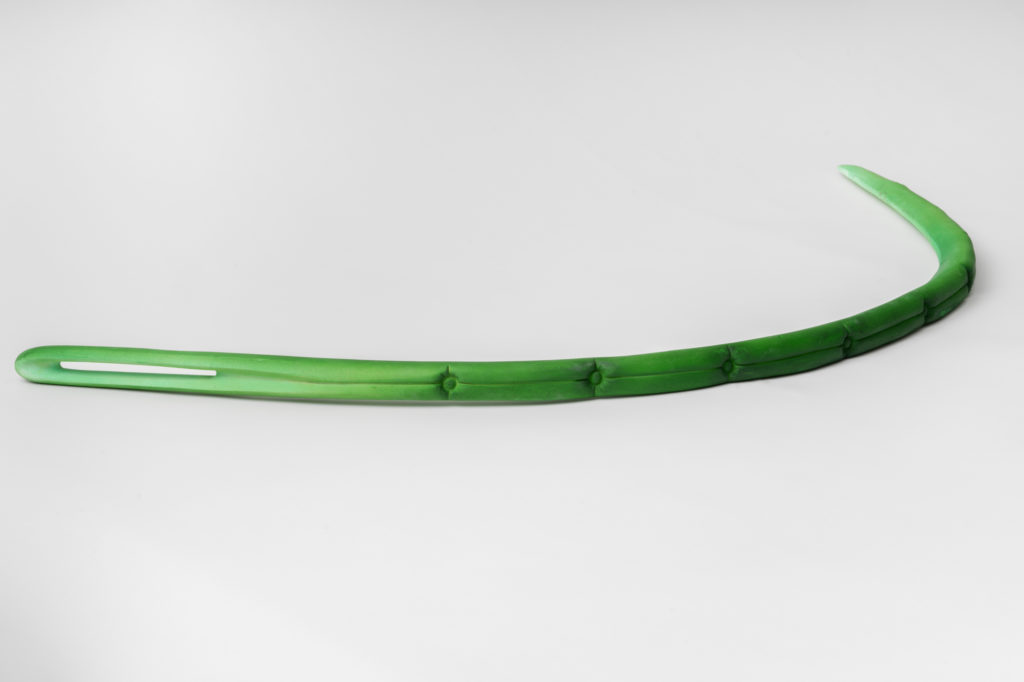December
Claudette Gacuti
February 4–March 25, 2023
But have you ever arrived on a world at dawn?
Samuel R. Delaney
Excuse the naivete but hasn’t terra always meant earth in one form or another? When did we start scattering the terrestrial throughout the known universe, attaching it to other rocky planets? That the geoscientists also refer to Mercury or Venus as terrestrial has confused my sense of being in this solar system. How is a whole planet terrestrial anyway? I thought the term applied to that which belongs to earth, not earth itself. It’s like if I told you that “I am personal”; you would correct my English. I am a person, sure, and things may be personal to me. But I digress. All I want here is to be spared of the extra cosmic stress; it’s already tricky business being terrestrial the way I’ve known, with a restless ground that shifts and constantly places me elsewhere.
How did I even end up in Los Angeles? In Hollywood? I suppose it is I who sometimes leaves a land for another. I once arrived somewhere on a bus; it was at dawn. So, to answer Samuel R.’s question—Yes, I have. Usually, however, I descend from the sky, looking through the window at the alien newness coming at me. Or am I the alien? The mutual alienation only sharpens after landing and holds all the way through my stay. My return from Los Angeles cannot be protracted like that time in the 90s when I thought I’d bring back a land that instead continues to erode and not just in memory. So much soil there moves, affecting general geography at the end of the big rainy season every December. Contrary to what I’ve been told and what may be surmised by the recent freaky rain events here, it turns out the Pacific will never sink California. For 5 million years, the Los Angeles basin in particular has in fact been rising from the ocean floor. Its surface sits atop an ancient subterranean beach, a “giant bowl of sand” as deep as Everest is tall. I learned all of this from the local almanac. If for weeks the ground gave way in chunks, it is because rapid rainwater so disturbed that sand, forcing the asphalt above to collapse into the voids left in its wake. It’s no comfort to stay longer if I might contend with quickened sand that yields to sinkholes. I’ll see you back in New York City, the world I first approached at dawn, even if the ground there is artificial and frankly too rigid for stability. —Yours, cg.
December, the New York–based Claudette Gacuti’s first exhibition with the gallery and first solo presentation in Los Angeles, presents three new wall works and eight earthenware and mixed-media sculptures with shapes inspired by upholstery needles.
Magnified in scale, the “needles” appear born of an alien realm, another world that is in part Gacuti’s own: these objects have been worked and re-worked from fractured fragments of prior sculptures. Repaired with sawdust and polyurethane and painted clay, they reveal scars and braces, rendering them more stable for having been broken. Laid flat on a raised bed, the sculptures are hardly inert. They feint at an abstract potential for function: perhaps sewing together ruptured ground—that is, if they weren’t themselves, like parched soil, so brittle.
In their horizontality and materiality, the sculptures suggest a kind of landscape painting, one in which earth and atmosphere are indeterminate and interactive. The wall works, hung like an altarpiece in triptych formation, also act as almost-landscapes, their images conjuring fields viewed from overhead. With what we might take to be curtains, they transform into three improbable windows onto lands both distant and near, or onto somewhere that has yet to arrive.
Though hung side-by-side, these assemblages will likely live separately from one another after December closes. By anticipating their displacement in their very constellation, Gacuti’s objects in cloth and wood and paper reckon with psychic and physical instability. Taken together, December’s arrangement transgresses and rejects neat boundaries of geologic and human time, domestic and exterior, object and image, ground and sky.
Drew Zeiba
—
Claudette Gacuti (b. Burundi) makes objects for a world whose ground will not settle. She conflates scales—geologic, domestic, psychological—to study and adapt to earthly instability. Fear and fantasy cohabit in her forms. Gacuti holds an MS in architecture from the University of Minnesota and an MFA in sculpture from the Milton Avery Graduate School of the Arts at Bard College. Gacuti is also showing new work in “Taylor Davis Selects: Invisible Ground of Sympathy,” on view at the ICA Boston through January 7, 2024.
*Concurrent to December, in the STARS vitrine gallery, is Roula Nassar’s piece The weather’s warm here my darling. (Write to me!)
